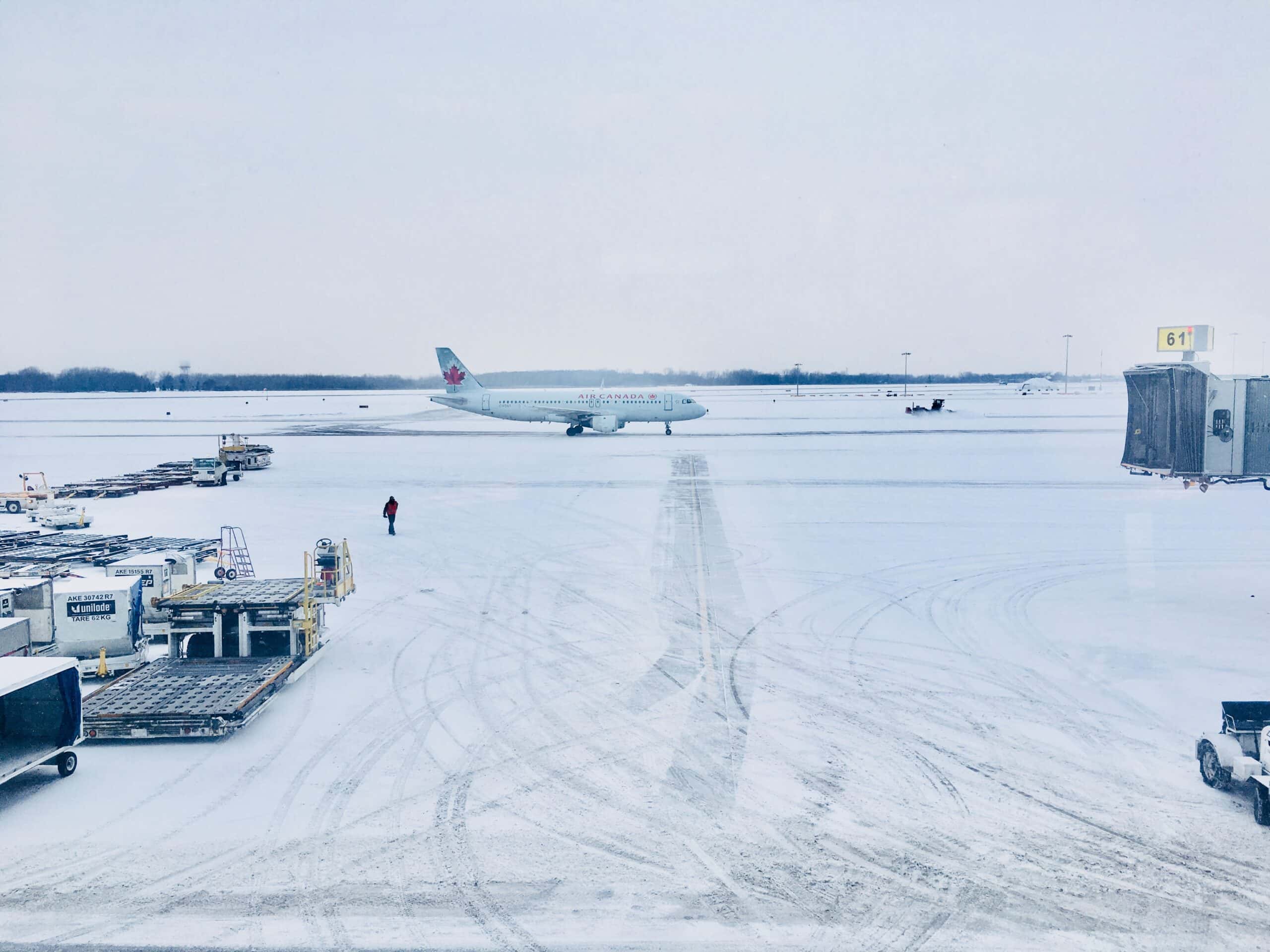Ice can form all over an aircraft. And it can profoundly impact the performance of the wings, propellers and devices placed on the aircraft’s skin unless you De-ice.
The most critical area is the Wing leading Edge. The front facing, curved section, which hits the airflow first. Critical for “lift”.

Icing and snow destroy the smooth flow of air across the upper wing and lower wing surface area. It increases drag and reduces lift created by the wing. No lift – no flying.
Icing can happen on the ground and while in the air. We combat it through a multitude of methods such as de-icing chemical sprays, engine heat and mechanical systems called “boots”. But this most important, proactive step, is to use anti-icing fluid to blast ice and snow off aircraft.
And to do it as close to aircraft departure time as possible. There are training courses you can do that train you in this process, with the Airline being the responsible entity.
Whether you are seeking the tools or the training, we have links to further information below, but we also look at where de-icing might go in the future – in terms of chemicals and sustainability.
Ice and snow cause major disruptions at airports. Some airports, such as Chicago O’Hare or Moscow Sheremetyevo have lots of experience, but aircraft icing can sometimes surprise you when you don’t expect it. It’s a huge headache for airlines and specialist equipment and trained personnel need to be kept on standby for extended periods, sometimes years, looking out for ice and snow.
Ice accumulates on all external surfaces of the aircraft. Wings, Aircraft Nose, engines, propellers, antennae, and intake vents. If your flight leaves with ice, which it shouldn’t, it will cause the aircraft to fly at a higher angle of attack, causing even more ice to accumulate when you really don’t want it. Why?

Because this introduces a significant risk of WING STALL. Snow and ice are handled well by commercial aircraft engines, but smaller light aircraft have carburetors, which can seize if they don’t have anti – icing protection.
Ice forms on the ground when the temperature drops below freezing for a sustained period. Zero Celsius or 32 degrees Fahrenheit.
Flights through Cumulus and Stratiform clouds usually at temperatures between zero and -20 degrees, or through the rain or drizzle which exists at 0 degrees, will cause ice to form on the aircraft. Overall, ice causes 15% of all aircraft weather related accidents. And of those, in more recent years, the vast majority (93%) were caused by conditions during flights.
We have aircraft anti – icing and de-icing systems. What’s the difference? With anti-ice, you don’t yet have ice, but it’s predicted along your flightpath. For this we have systems that are activated to stop this potential build-up. De-ice is operations to existing ice and snow.
When we de-ice on the ground, we treat the ice as “contaminants”. And we have three goals.

A quick note on the de-icing fluid we use. There are Four distinct types depending on the deicing operations required. These are called FDP’s or Freezing Point Depressant fluids. These are.
The de-icing Fluids used are…
Propylene is the most used because it’s the least harmful. It is added to water with corrosion inhibitors, wetting agents and dyes.
Airlines are responsible for de-icing aircraft. Not the airport. As you can imagine, it is a skilled job with a high-risk component. First, we start with the standards. We use the ICAO equivalents which are ISO 11075 and 11078.
The standards are AMS 1424 and 1428 and you obtain these via the High-Speed Ramp test, low speed ramp test and the Water spray endurance test. This icing of aircraft test ensures you can decontaminate the surface enough and don’t continue to use harmful chemicals.

We are searching for a replacement for glycol as it has a high BOD (biochemical oxygen demand) as it degrades in surface waters. Yes, the Airport Authorities do a great deal of work in limiting its use and clean up but it’s impossible to stop 100% of it reaching the local area water table.
But we need to find a replacement. De-icing trucks that contain the fluid have a crane attached to allow the operator to reach 100% of the aircraft surfaces.
Aircraft De-icing Ops Management (3 days)
There is also the IATA De-icing / Anti-Icing Quality Pool (DAQCP) with over 120 airlines participating. You can find those members here.
As we always say here at WT Towers, do not do any training that is not certified or fails to get you a real qualification. If you reach out to [email protected] they will give you a lot of information on de-icing training.
The training qualifications themselves are SAE AS 6286B and you can find them and many others there. But be careful – there is also the vehicle/truck driving, which is a separate certification, as is the airfield driving element. There is also general safety training and security. Just doing the de-icing course will not allow you to move straight to using de-icing equipment.
But come on – shooting that huge jet hose at big aircraft looks like fun. Right?